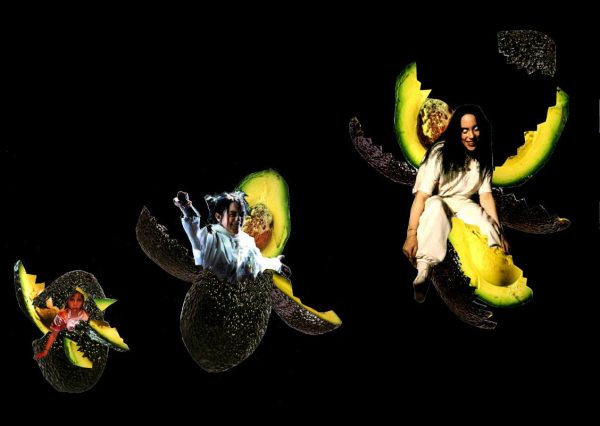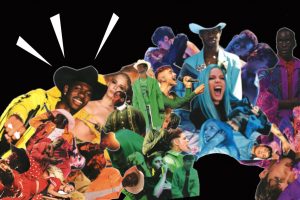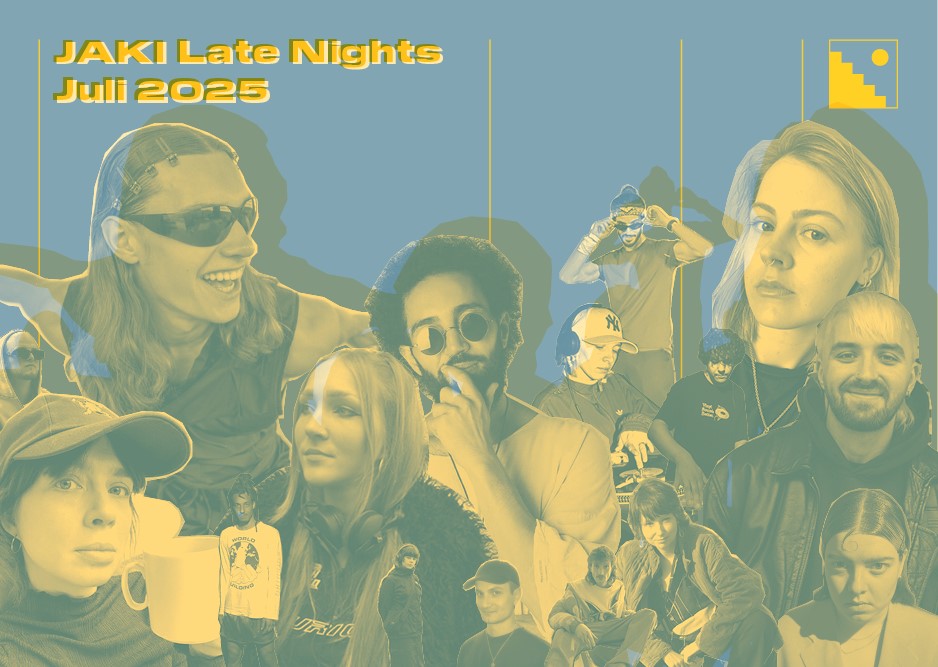Generation, why?
Are the kids alright? And are we, too?
In August, three authors reflect on current phenomena in youth culture – and what they mean for the present.
For the second part of the series, JULIA LORENZ has written a plea against generational clichés and the rampant mania to categorize everything in the pop culture. Because she thinks: Not everything new has to become the “sound of a generation”.
Illustration: RONJA SEIFERT
Translation: Denise Oemcke

The good news first: “Generation Y” is off the hook.
The world has worked its way through the medium young people who were born between the early 80s and the mid-90s – at least in the usual sense – in extreme detail and analyzed them more extensively than any generation before it. But soon nobody will be interested in Millennials anymore, in their (alleged) narcissism, their fear of commitment and irresponsibility, their apolitical optimism and consumerism, their obsession with Mac products and Polaroid cameras, third-wave coffee and avocado toast, and their laziness, susceptibility to flea-market-kitsch, their craft-beer fueled, superficial hedonism. And for all the other (sometimes stupid, sometimes true, but mostly annoying) clichés that are so boring that you can hardly write them down anymore. Now the next generation will come to the dissection table: Generation Z has taken over.
In 1991, Douglas Coupland’s episodic novel “Generation X” turned the cohort concept of the same name from sociology into a socially acceptable concept in pop music – and established the irresistible myth of a ( fate-) community of cynical slackers driven by the disgust of the world. Since then, at the latest, pop culture has been obsessed with the idea of typifying generations. With each age group, it seems, a bit more.
The journalist Joachim Hentschel describes in his book “Zu geil für diese Welt. Die 90er – Euphorie und Drama eines Jahrzehnts” (“Too hot for this world. The 90s – Euphoria and Drama of a Decade”), how in Generation X even the generations themselves began to conduct generational research:
“A ‘crown jewel subject’ since the ’90s: In addition to the ‘Prozac Nation’ (Elizabeth Wurtzel, 1994), the ‘virtue of disorientation’ (Johannes Goebel and Christoph Clermont, 1997), there are primarily two significant generalizations that shape the discourse on the state of affairs over time. Generation X, as mentioned before, and, more recently, the Millennials. Two neighboring communities of fate, which handed each other the baton as if on a race track in the middle of the decade. The baton that decided who would be the best advertising target group and at the same time the poorest wretch in the world”.
By now the Millennium has passed the baton on to Generation Z: to the young people born since the mid-90s. Pre-digital times with CDs and MTV as pop culture accelerators have never existed for this generation. When it comes to topics such as queerness, gender justice and mental illness, they obviously have a completely different way of matter than their parents and siblings.
This is why you are obviously allowed to be fascinated by artists such as Lil Nas X, Willow Smith or the US singer Billie Eilish, born in 2001: After all, there never have been pop stars like them. Pop stars who completely unbiasedly transcend gender images and are so aware of the (technical) possibilities of their time that they seemingly effortlessly knock out something new.
When Billie Eilish released her debut album When We All Fall Asleep, Where Do We Go?” in March, she had already been a star on Instagram for some years. She had so far not featured much in the pop culture discourse of established media. Or, to put it another way: The majority of the pop media had missed the youth phenomenon Billie Eilish – but now, at the eleventh hour, they pounced on the singer with the utmost will to analyze her music.
There was hardly an article about Billie Eilish that didn’t try to clarify the big picture. And hardly any article did not revolve around the question which peculiarity of the present Z she could be a symptom of: What does the success of this morbid wired teenager, whose videos look like she had been flushed out of the depths of the strangest Reddit forums into the mainstream, tell us about youth? Are we (finally!) dealing with a new female Kurt Cobain?
The pop-cultural mania to categorize everything is understandable. After all, the world is confusing, and one of the main tasks of (pop-)journalism is to reflect the present and describe trends. You don’t just want to know what music sounds like – you also want to know what it tells you about the time we live in. There always need to be contractions.
But it gets tricky when the contemporary bystanders do not approach the succeeding generations descriptively and with honest interest, but instead, let themselves be carried away into paternalistic analyses. Anyone who is using the example of an artist like Billie Eilish is determined to explain a generation that is just differentiating itself and finding its voice and whose codes the older people are only just learning to read and comprehend, simultaneously overwhelms them with responsibility and at the does not take them really seriously. When historicization begins through external analysis before the youths are given the chance to write their own history, the present and contemporary analysis are separated.
Treating young people, young artists, as research objects is often nothing more than an attempt to maintain control over the phenomena of youth culture. And thus keeping a bit of interpretational sovereignty. Not every idea and idiosyncrasy of a young, upcoming generation defines the “sound of their generation”, even though it is of course always easier to designate ambassadors of the zeitgeist than to face the complexity of these times. If Billie Eilish decides to veil her body in garbage bag-like streetwear, it doesn’t necessarily say anything about the present. Maybe it’s just about Billie Eilish and her view of the opportunities of action that her generation has.
Perhaps the mania to categorize generations has never made much sense – but probably never as little sense as today. After all, identities today can be more diverse and transformational than ever before. One can also recognize this by how little the idols of the time can be reduced to a common denominator: After all, apart from the over-aestheticised nihilist Billie Eilish, the greatest pop star of her generation is the most unpretentious, most serious, Swedish climate activist Greta Thunberg.
Text: Julia Lorenz // Illustration: Ronja Seifert // Translation: Denise Oemcke















